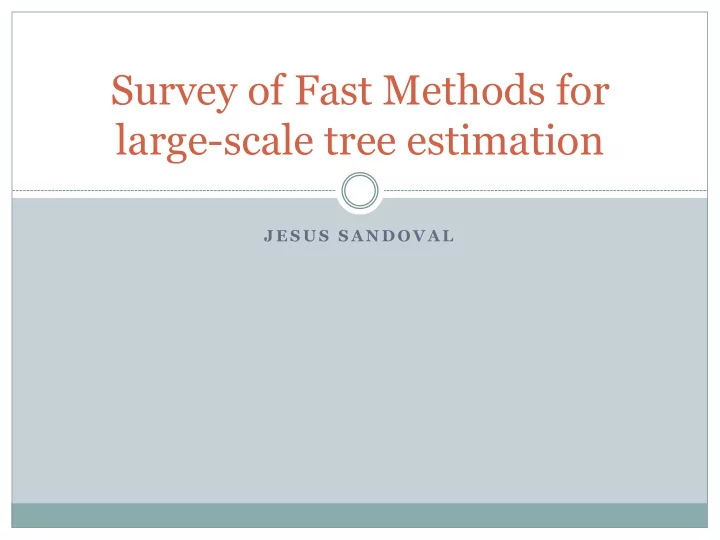

Survey of Fast Methods for large-scale tree estimation J E S U S S A N D O V A L
Introduction Final paper will look at different methods that can be used for large-scale tree estimation Will focus on how papers evaluated methods Were they compared to other methods? What datasets were used? What other criteria went into the evaluation?
Methods Qtree Randomized quartet based algorithm Local-Sensitivity Hashing Implementation is based on three ideas Used on trees with short branch length GPU-UPGMA UPGMA ported onto GPU by using CUDA
Methods Continued FastTree-2 Improves on FastTree by adding minimum evolution subtree-pruning-regrafting (SPR) and maximum likelihood nearest neighbor interchanges (NNI) NINJA Speeds up neighbor joining
Works Cited Brown, Daniel G., and Jakub Truszkowski. "Fast reconstruction of phylogenetic trees using locality-sensitive hashing." (2012): n. pag. Cornell University Library . Web.<http://arxiv.org/abs/1111.0379>. Brown, Daniel G., Jakub Truszkowski, and Yanqi Hao. "Towards a practical O(n logn) phylogeny algorithm." (2012): n. pag. BioMed Central . Web. <https://almob.biomedcentral.com/articles/10.1186/1748-7188-7-32>. Price, Morgan N., Paramvir S. Dehal, and Adam P. Arkin. "FastTree 2 – Approximately Maximum-Likelihood Trees for Large Alignments." PLOS (2010): n. pag. Web.. <http://journals.plos.org/plosone/article?id=10.1371/journal.pone.00094 90>. Wheeler T.J. (2009) Large-Scale Neighbor-Joining with NINJA. In: Salzberg S.L., Warnow T. (eds) Algorithms in Bioinformatics. WABI 2009. Lecture Notes in Computer Science, vol 5724. Springer, Berlin, Heidelberg
Recommend
More recommend